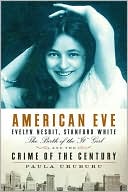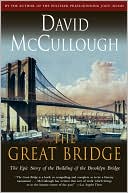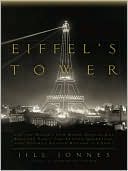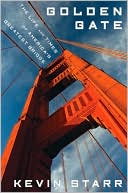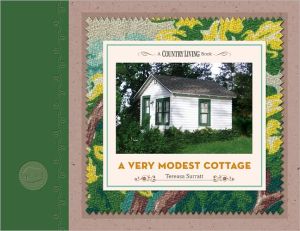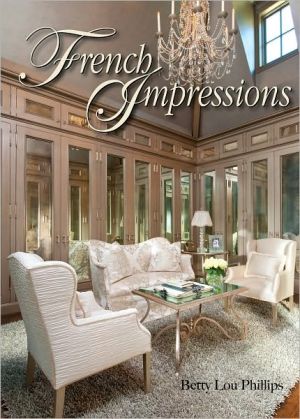Frank Lloyd Wright: The Masterworks
This extraordinary book presents thirty-eight of the most renowned and significant buildings of America's premier architect, from his early Prairie work in Oak Park, Illinois, in the 1890s to his daring creations of the 1940s and 1950s.\ \ In entirely new photographs taken especially for this book by two leading architectural photographers under the direction of co-editor David Larkin, such internationally famous buildings as the Solomon R. Guggenheim Museum and Fallingwater and Wright's...
Search in google:
This extraordinary book presents thirty-eight of the most renowned and significant buildings of America's premier architect, from his early Prairie work in Oak Park, Illinois, in the 1890s to his daring creations of the 1940s and 1950s.In entirely new photographs taken especially for this book by two leading architectural photographers under the direction of co-editor David Larkin, such internationally famous buildings as the Solomon R. Guggenheim Museum and Fallingwater and Wright's homes Taliesin, Taliesin West, and the Oak Park Home and Studio are seen afresh, benefiting from the photographers' special access.Several lesser-known residences, such as Auldbrass Plantation in South Carolina, an array of wooden buildings that is Wright's American alternative to antebellum architecture, the William H. Winslow house in River Forest, Illinois, one of the architect's earliest and most surprisingly decorative houses, and the Kenneth Laurent house in Rockford, Illinois, a masterful curvilinear design, are seen in full color and demonstrate dimensions of Wright's work less often seen before. Public buildings, such as the dramatic concrete, glass, and steel Marin County Civic Center and Beth Sholom Synagogue show Wright as engineering virtuoso as well as creative architect. In addition to these existing masterworks, only the most famous of which are open to the public, the book covers buildings that have been demolished, notably the Larkin Company Administration Building, Midway Gardens, and the Imperial Hotel, which are represented here by drawings and rich archival photographs.Each of the buildings is presented from conceptual sketch, plan, or drawing to finishedmasterwork, and each is accompanied by an in-depth essay detailing the development of the work. Extensive quotes from Wright's writings, unpublished talks, and private letters to the clients give valuable insight into the architect's own thinking about each commission. Never before has Wright's architecture been presented so elaborately in one volume.Publishers WeeklyWright, as Pfeiffer notes, was primarily a residential architect, and this stunning survey of 38 of his most influential buildings reveals how he created new patterns of living through rooms that open into one another and walls that reach out to engulf gardens and plantings. That the Wisconsin-born pioneer of organic architecture was also an innovative engineer emerges in discussions of Manhattan's Guggenheim Museum with its curved elements, the tripod design of Beth Sholom Synagogue in Elkins Park, Pa., and the Marin County Civic Center in San Rafael, Calif., featuring a circular public library at the hub of administrative buildings ensconced in the hills. Wright's home and studio in Oak Park, Ill., the ``Fallingwater'' house in Mills Run, Pa., and the Imperial Hotel in Tokyo are among the projects selected by Pfeiffer, editor of Wright's Collected Writings and author of many books about him. Nearly all of the buildings were newly photographed for this book, which features 275 color plates, including Wright's beautiful working drawings and plans. BOMC alternate. (Nov.)
\ Publishers Weekly\ - Publisher's Weekly\ Wright, as Pfeiffer notes, was primarily a residential architect, and this stunning survey of 38 of his most influential buildings reveals how he created new patterns of living through rooms that open into one another and walls that reach out to engulf gardens and plantings. That the Wisconsin-born pioneer of organic architecture was also an innovative engineer emerges in discussions of Manhattan's Guggenheim Museum with its curved elements, the tripod design of Beth Sholom Synagogue in Elkins Park, Pa., and the Marin County Civic Center in San Rafael, Calif., featuring a circular public library at the hub of administrative buildings ensconced in the hills. Wright's home and studio in Oak Park, Ill., the ``Fallingwater'' house in Mills Run, Pa., and the Imperial Hotel in Tokyo are among the projects selected by Pfeiffer, editor of Wright's Collected Writings and author of many books about him. Nearly all of the buildings were newly photographed for this book, which features 275 color plates, including Wright's beautiful working drawings and plans. BOMC alternate. (Nov.)\ \ \ \ \ BooknewsProbably the most elaborate presentation of Wright's architecture available, this handsome volume presents 38 of the great American architect's most renowned and significant buildings, from his early work in Oak Park in the 1890s to his creations of the 1940s and 1950s. Each building is presented from conceptual sketch, plan, or drawing to finished work and accompanied by an in-depth essay detailing the development of the work, with extensive quotes from Wright's writings, unpublished talks, and private letters. For extant buildings, entirely new color photographs have been taken for this volume, while demolished buildings are represented by rare archival photographs. 11x11" Annotation c. Book News, Inc., Portland, OR (booknews.com)\ \ \ Donna SeamanWright has been the subject of numerous books, illustrative and historical, popular and scholarly, but Larkin and Pfeiffer have still succeeded in creating something fresh and exciting. This handsome volume presents brand-new photographs of and lucid critical commentary on 38 of Wright's most significant buildings, including such famous public structures as the Unity Temple (1905) in Oak Park, Illinois, and New York's Guggenheim Museum (1943-59), as well as lesser-known but stunning private homes. This selection embraces Wright's entire career, from the early prairie style to the adventurous creations of the 1940s and 1950s. The process of design for each masterwork is documented from Wright's earliest conceptual sketches to his polished drawings, which are works of art in their own right. Some black-and-white photographs of buildings under construction are provided, but the book's strongest visual components are the grand color photographs. The shots were composed to capture the unique aesthetic of each structure's exterior and interior, from its orientation to the land to its elegant decorative detail and dramatic use of natural light. A liberal sampling of excerpts from Wright's writings and correspondence adds to this volume's authority and value.\ \

